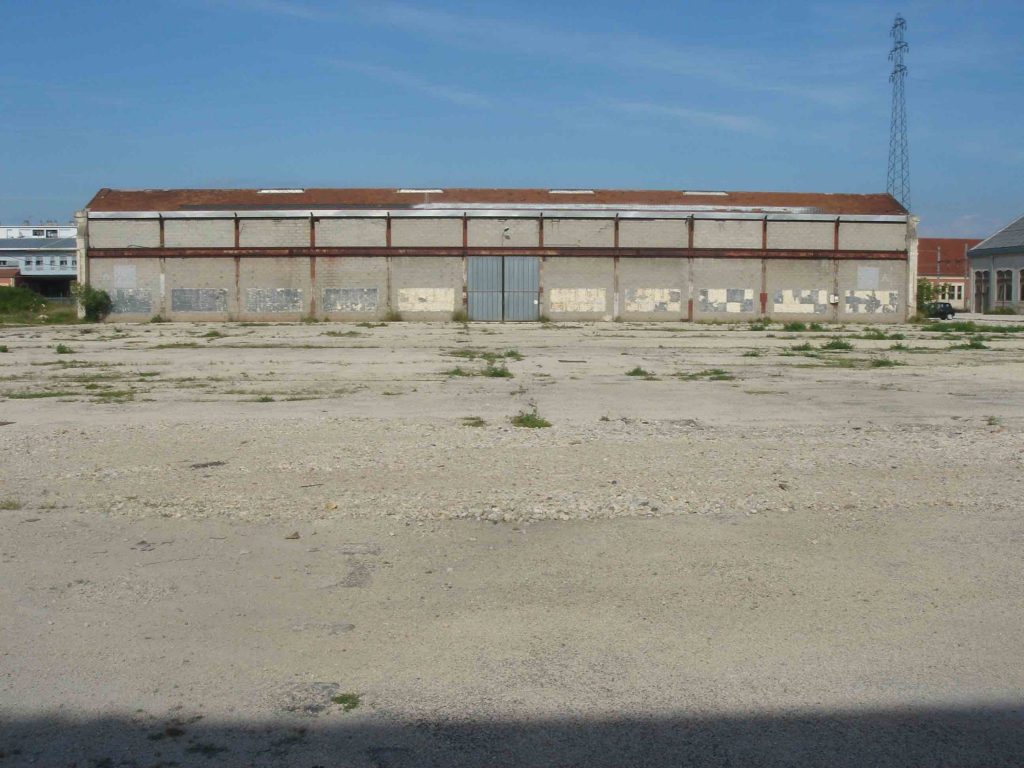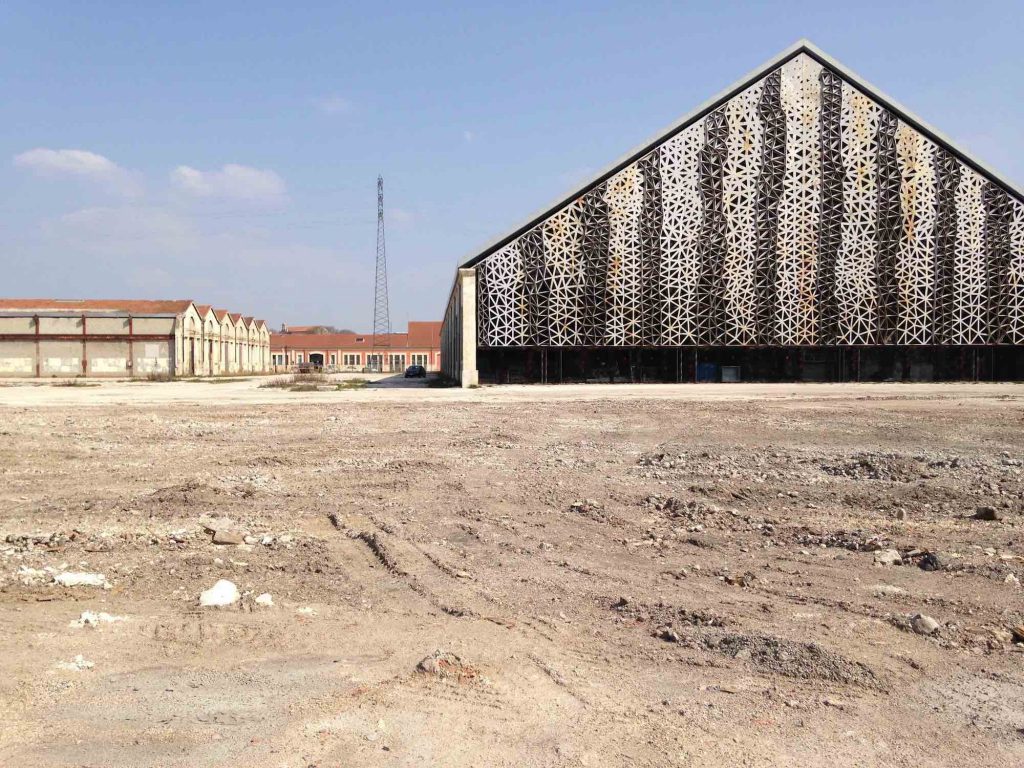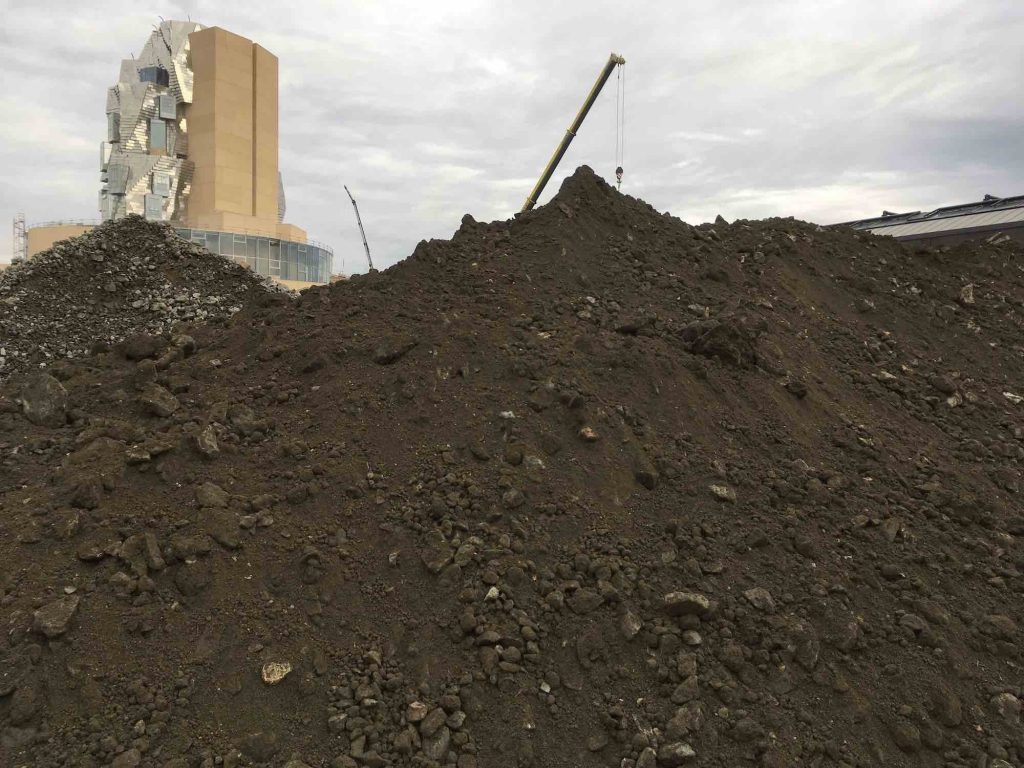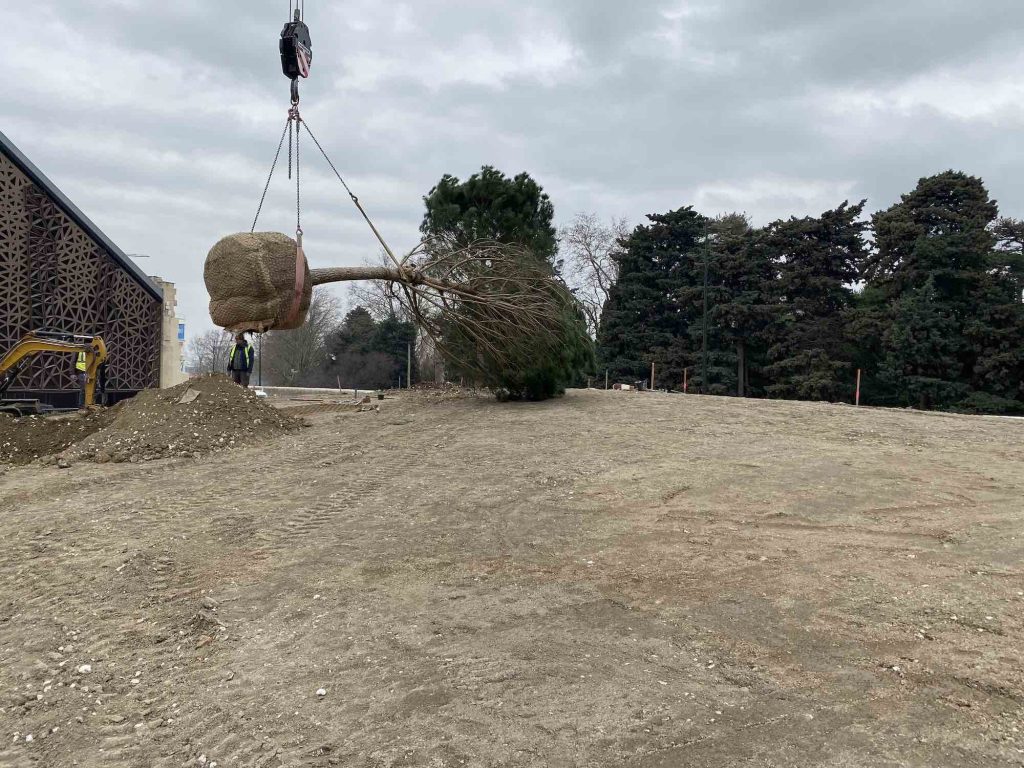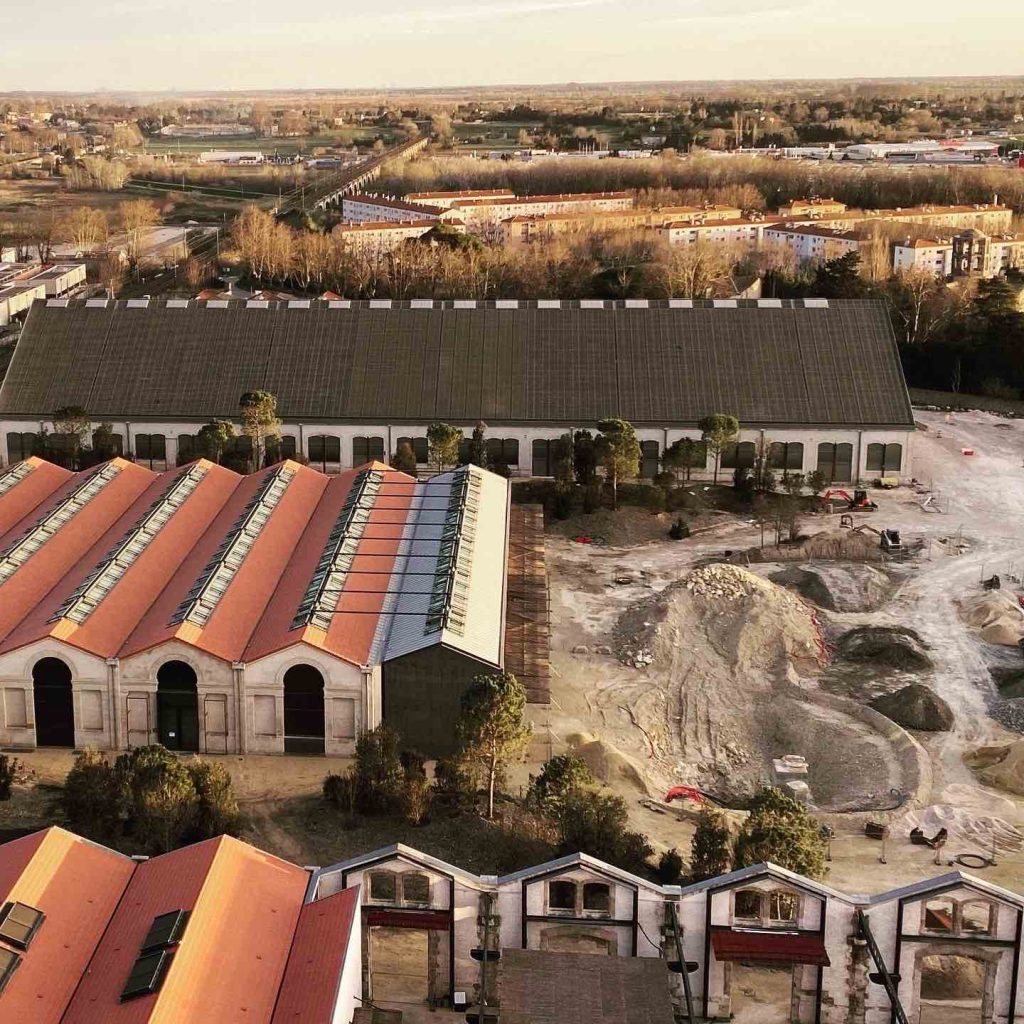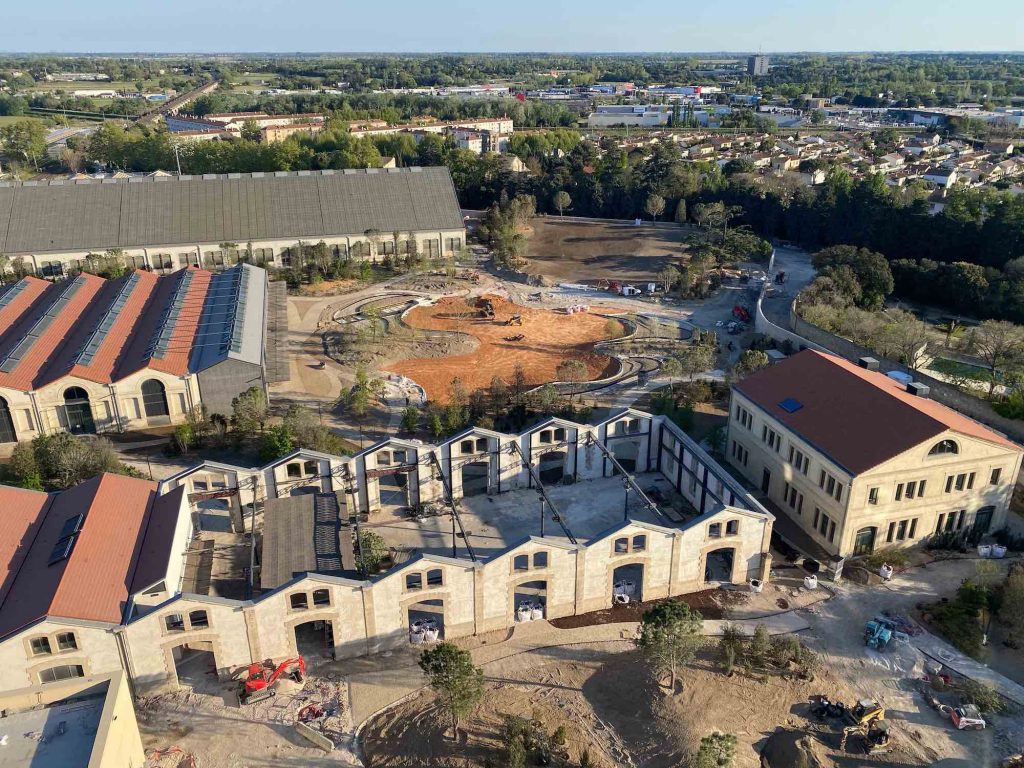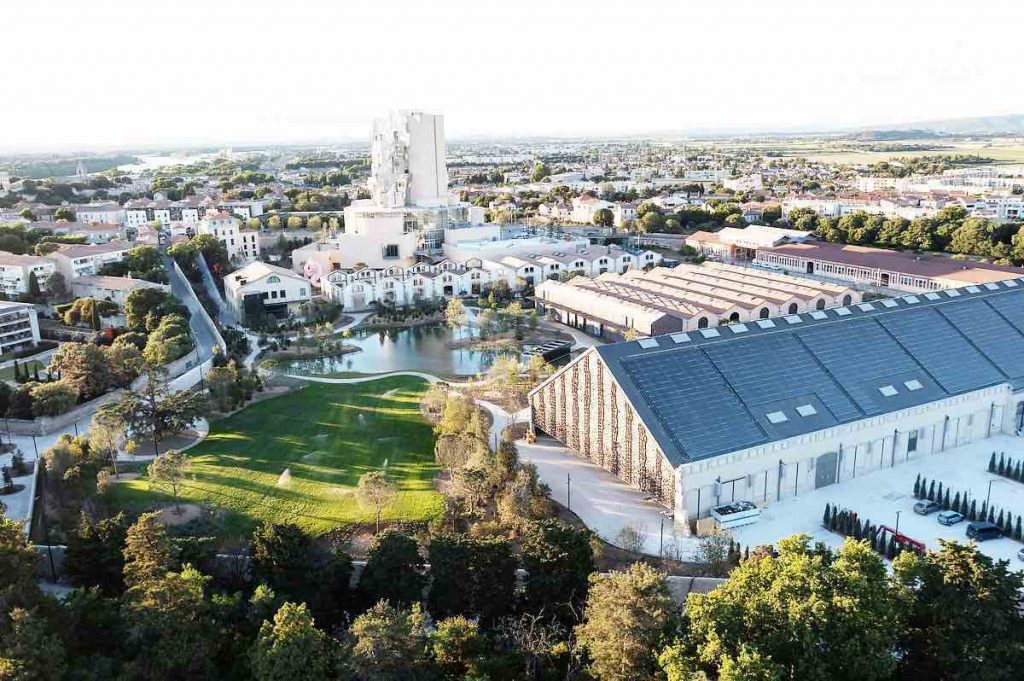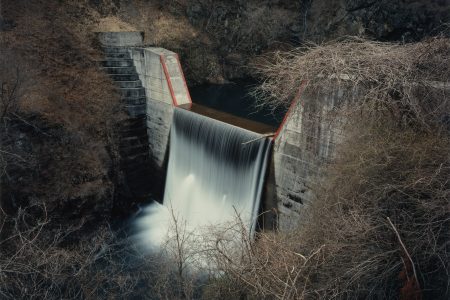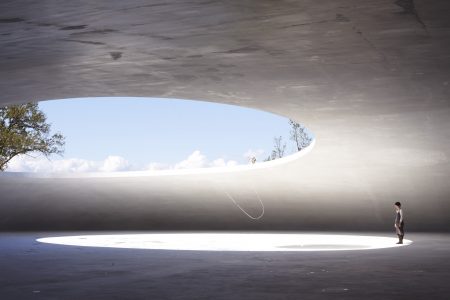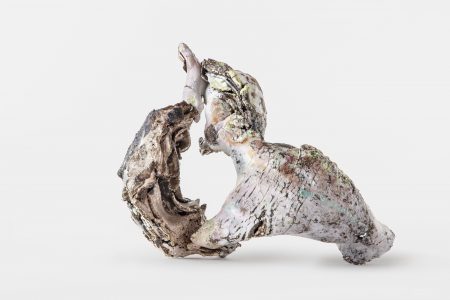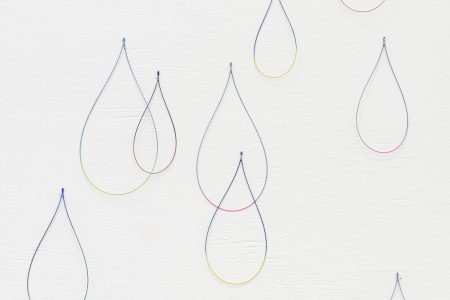Luma Arles – The Making of a Climate
When Bas Smets began the designs for the park at Luma Arles, the land was an old rail yard with little trace of nature. This portfolio is a visual diary of the extensive transformation process of creating his award-winning climate-conscious and welcoming park at Luma Arles.
Luma Arles is an experimental cultural centre that questions the relationships between art, environment, education and research. It is situated in the Parc des Ateliers, a former industrial railyard. Its activities are housed in multiple industrial buildings renovated by Annabelle Selldorf and in a new tower conceived by Frank Gehry. I was appointed by Maja Hoffmann, president of the Luma Foundation, to transform this wasteland into a lush and welcoming park, connecting all the buildings in an archipelago of creation.
Semi-desert
The site consisted of a large concrete platform, dug out of the bedrock. Without soil and water, vegetation could root nor grow. Unprotected from both the harsh summer heat and the cold winter winds, the site had the climatic conditions of a semi-desert. To make a park, we first needed to change the climate.
The platform’s sterility was in great contrast with the unique landscapes surrounding Arles: the Camargue, the Crau and the Alpilles. These three ecologies represent all the strategies plant life had adopted over time to conquer this region, from its wetlands to its rocky environments.
Accelerated Nature
We wondered what nature would have done over time. We modelled how the northern mistral winds would gradually blow sediments to the site, creating a new fertile topography on top of the dead rocks. The winds would accumulate a dune-like landscape that produces a new space-time relationship. The higher the elevation of the dune, the more time would have passed to create it. A walk along the dunes becomes a journey into accumulated time, or the future.
We imagined how plants would grow in these varying depths of soil. Pioneer plants would conquer the shallow depths, while an ecological succession would happen with more available soil. Planted on their southern edges, the vegetation provides summer shade and blocks the winter winds, greatly enhancing the outdoor comfort. Inspired by the ecologies surrounding Arles, more than 140 different plant species have been introduced, based on soil depth, orientation and access to water. A total of 80.000 trees, shrubs flowers and grasses have been planted in this new soil. The park accelerates 200 years of spontaneous processes into merely 10 years and it compresses the three ecologies of the region in a new hybrid landscape.
Water & Micro-climate
The vegetation is irrigated by a sustainable water system that draws its source from the nearby Craponne Canal. Its water is pumped into a central pond where it is naturally filtered by the aquatic plants. The pond serves as a reservoir for the plant irrigation and as a cooling device for the park. The large pond, together with the vegetation, produces an important amount evapotranspiration in summer, creating a micro-climate that transforms the former concrete semi-desert into a Mediterranean climate.
Experiment & Future
The growth and development of the vegetation is scientifically monitored for its root growth, water needs and oxygen production. From the start the project has been conceived as an experiment in the transformation of an industrial wasteland into a self-sustaining, living organism. In a time where too many natural habitats are destroyed, the projects illustrates humans’ ability to accelerate the reconquering of nature on industrial wastelands. The project does not aim at re-establishing a lost past, but rather proposes to go faster into the future.
First photo is by Iwan Baan. All photos by Bureau Bas Smets except where noted.
@bassmets
bassmets.be
@luma_arles
luma.org
